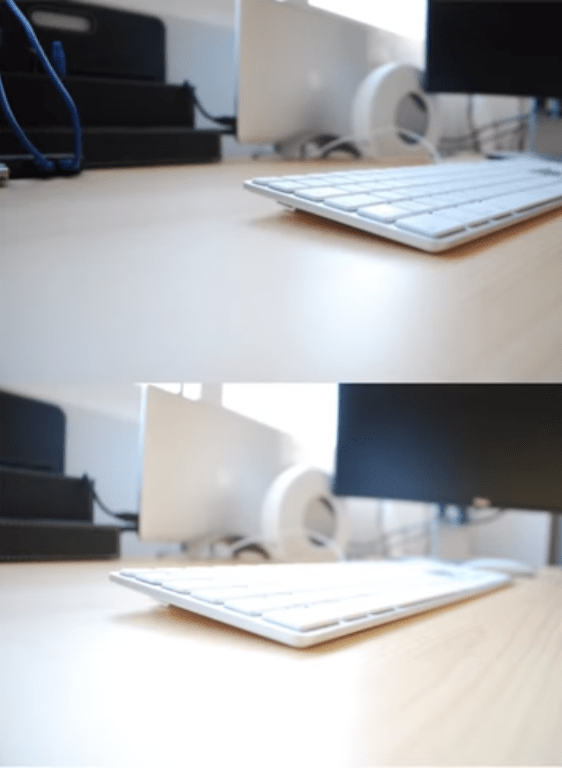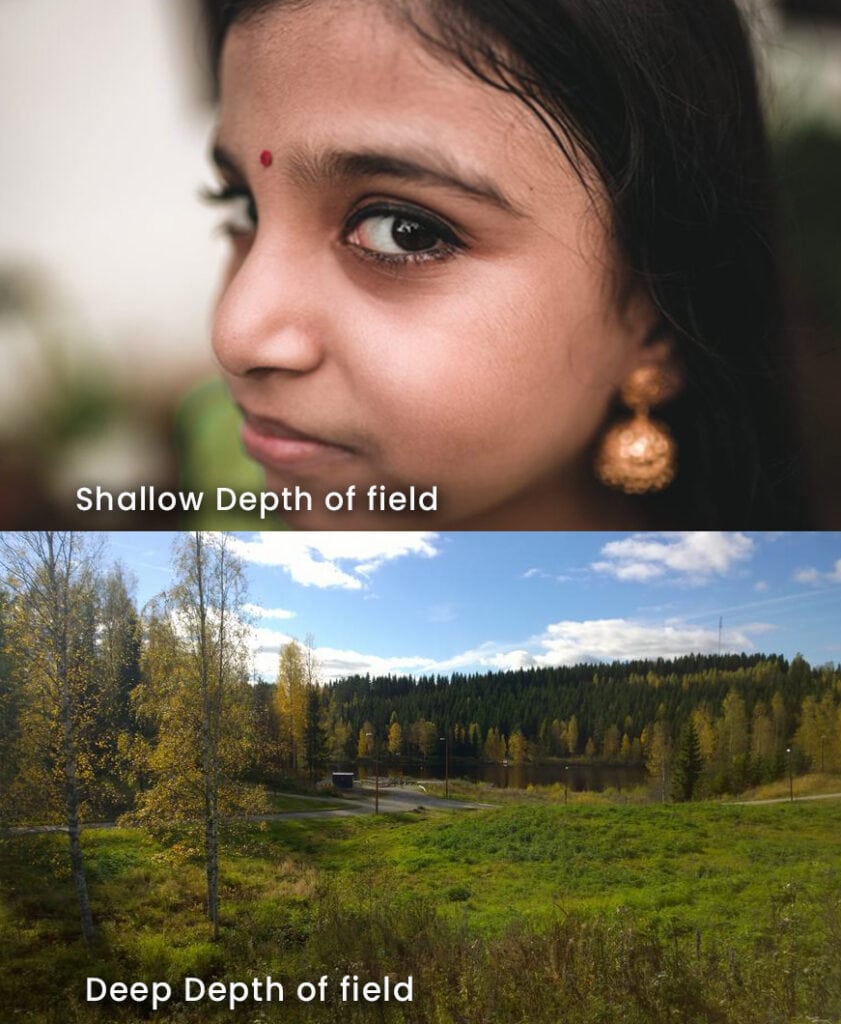When I changed the shutter speed of my camera, I noticed some differences between the photos. A lot of people think the change is accrued in the depth of field. So, does shutter speed affect the depth of the field?
Not in most cases. Shutter speed rarely affects the depth of field. Depth of field is mainly affected by aperture, focal length, and distance from the subject. The aperture (such as f/1.4) and the longest focal lengths have a short depth of field. But when the shutter speed is high, the camera will widen the aperture which shortens the depth of field.
It might be confusing to know the real difference but here are some key points to know when you have this giant question in mind. I spent some time talking with the professional photographers online and after some research, I got some clarification.
Online blogs have mixed opinions about this question and they think it doesn’t really matter. Single photos might not show the big difference but the comparison can show the difference.
Simple Overview of Depth of field
Depth of field is the distance between the nearest and furthest subjects in a picture that is in focus. Suppose if you take portrait shots with a long lens and focal length, the depth of field is less. This is the narrow depth of field you can say. Suppose if you take the long portrait shots, it would be the deep depth of field.
Here is the illustrated picture from “PhotogrpahyLife.com”. The larger aperture has the smaller f-stop numbers. The smaller f/stop numbers produce a shallow depth of field and on the other hand, higher f/stop numbers (f/32) gives a larger depth of field.

You might think who will use higher f/stop numbers to intentionally make the larger depth of field videos. It’s easy to get lots of depth of field but difficult to get the shallow or limited depth of field. It might need lenses, sensor sizes, and different focal length values. It can be annoying to go with the shallow depth of field every time.
Does Shutter Speed affect Depth of field

If you can see the picture, the two photos have the same aperture value and shutter speed but the change is ISO. So does ISO Change the depth of field? Not at all. From the above picture, the keyboard keys are smooth and the picture is clear.
Even though the light on the keyboard is dim, the area of focus is good. But when it comes to the second picture, the ISO is increased by keeping the remaining values the same. So, in this case, shutter speed has to be decreased rather than increasing ISO.
Shutter speed doesn’t really affect this type of photo. Because the object is not moving. When the subject is not moving, you don’t have to worry about the shutter speed. Shutter speed can be lower than normal.
When you decrease the shutter speed, the light becomes more accurate. So in this photo case, neither shutter speed nor aperture affects the depth of field.
If you change the aperture, you must change the shutter speed or ISO to match with the light. So, Indirectly you are changing the shutter speed of the camera. So, now how shutter speed will impact the depth of field?
| SAME ISO to match LIGHT | |
| Shutter Speed | ‘F’ stop number |
| 1/4 | f/45 |
| 1/8 | f/32 |
| 1/30 | f/16 |
| 1/125 | f/8 |
| 1/500 | f/4 |
| 1/4000 | f/1.4 |
As you can see in the table, the shutter speed should have to match the aperture value for the same exposure. And in case if you do not want to change the shutter speed, you must change the ISO value.
Changing the shutter speed to the maximum number means you are stopping the action of the moving object in the camera. So, what about the f-stop number? Is it only there to match the exposure? Nope. It has more to do with the ‘Depth of field’.
Let’s say you are using a 70mm lens and f/1.4 lens with a default aperture at f/8. For this aperture, you need to adjust the shutter speed to 1/200th or 1/250 sec. This makes your camera keep the shutter open for a short time compared to 1/25 sec shutter speed.
The shorter shutter open time will give the low light so the aperture f/8 will and 1/250 sec shutter speed will give the correct exposure on Image. Suppose you want a shallow depth of field, you reduce the aperture to f/2.8.
Keeping the same shutter speed with this aperture value makes the image over expose. Because of this f/2.8, the light will get more light. Now, you have to adjust the shutter speed. Because you are allowing more light with the aperture number, you must decrease the light with the shutter speed. So, what to do now?
You have to keep the shutter open for a shorter time. So, simply, increase the shutter speed to 1/1600 sec. Suppose if you changed the ‘f’ number to 1.4, the more light comes into the sensor, and again, you need to increase the shutter speed to 1/4000 sec to match the light.
The subject also matters in this photography technique. Sports photography needs more shutter speed and a higher ‘f’ number, in this case, you need to arrange some lights for better results.
When you increase the shutter speed, the camera shutter opens and closes more quickly which allows less light that enters the camera. So, in wildlife photography, when you need to capture the moving birds, you need to adjust the shutter speed to capture the wings of the birds. Let’s say you set the shutter speed to 1/2000 sec. You need to adjust the aperture to the f/2 for good light.
What factors affect the depth of field?
The three main factors that affect the depth of field are the Aperture, the focal length of the camera lens you attached, and the distance from the subject to the camera. Now let’s talk about these three parameters in detail.
These parameters won’t directly influence the depth of field but they influence one another that results in the depth of field change.
The larger the f/stop number, the more depth of field is there. Aperture has another advantage of blurring the background. Now let’s keep that aside and concentrate on the Depth of field.

At f/2, you will have a narrow depth of field, with little focus on the background. With the f/16, you will have more depth of field and a wide range of areas in focus. Landscape photography or wedding photography are some examples where you need more objects in the scene to be focused on.
Changing the aperture value directly impacts the depth of field. But that’s not only the parameter. It depends on the focal length of the lens and the distance to the subject also.
The shorter the focal length, the more depth of field you will have. A 20mm lens will have more depth of field than a 200mm lens. With some 4mm ultra-wide lens, you will have more space in the picture that means more depth of field.
Now coming to the distance to the subject, when the subject is near the camera, you will have less depth of field, and the far away you move your subject from the camera, the more depth of field you will have. If you change the lens frequently, here is the guide I’ve researched and written ‘Can you remove the lens while the camera is ON?’
Conclusion
Shutter speed doesn’t directly affect the depth of field but there are some considerations. Shutter speed affects Aperture and then Aperture affects depth of field. To match the light in the picture we should adjust the shutter speed with respect to aperture to avoid under or overexposed images.
Now, you are changing the shutter speed which finally changes the aperture. Suppose if you have a tripod and capturing in outdoor conditions, you do not need to concentrate on shutter speed.
Because you have the tripod for holding the camera and natural light for brightness. Suppose, you are taking pictures of a racing car or flying bird, you need to increase the shutter speed. Because of natural light, the aperture can be smaller. But in low light conditions, you must change the aperture value.
Thus, some rare conditions like switching to very high shutter speeds where you need to adjust eh aperture value to match the light, affect the depth of field.
CapturingGuide.com is a participant in the Amazon Services LLC Associates Program, an affiliate advertising program designed to provide a means for sites to earn advertising fees by advertising and linking to Amazon.com. We may earn a commission when you buy through links on our site.
